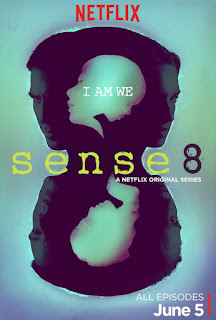The back story to the film is actually more interesting than the plot. John Russo (co-writer of Night of the Living Dead) and George Romero (director and co-writer of the same) had a bit of a falling out over the direction of any sequels, with each man going their own way. George using the "of the Dead" suffix and John the "of the Living Dead" suffix. Kids huh? So we all know how George's films ended as the social/economic/military commentaries that would shape all future zombie films, but what about John? Well after a writing a sequel script to be directed by Tobe (Texas Chain Saw Massacre) Hooper that went nowhere, he teamed up with Dan (Dark Star, Alien, Life Force, Total Recall) O'Bannon, wrote a new script. The rest, as they say, is zombie history.
Is it as good as Romero's Dawn of the Dead? Really it does a disservice to both films to make a comparison as they are both so different to each other in the direction the story is taken... but, I'd say yes it is just as good, just in a funnier, goofier, more comic-book way. The Return of the Living Dead is entirely successful in its aims; to make you laugh and spew in equal amounts. It's a zombie film as made by the three stooges and is laugh-out-loud funny but not in that nasty post-modern ironic way that seems to have infected films nowadays.
The "Quincy" style punks are great and their teenage nihilistic dialogue is hilariously earnest:
- "You think this is a fuckin' costume? This is a way of life"
- "I like death"
- "Do you ever wonder about all the different ways of dying? You know, violently? And wonder, like, what would be the most horrible way to die?"
And then there's Linnea Quigley, who after disrobing to dance naked on a grave keeps her clothes off (except for a pair of woolly stockings!) for pretty much the entire film.
The film is jammed full of little touches like the zombie butterflies, the eye test poster, the "Fuck You" football jacket, and the fact that the fate of the world rest on the shoulders of Bert and Ernie - a right pair of Muppets. There are so many memorable moments that it'd be unfair listing any of them as you really should watch this film yourself. I will say don't have a mouth full of coffee when the "rabid weasels" line pops up like I did.
The undead are fantastic - imaginative, gory, fast, intelligent and nothing like the grim shambling grey dead of previous zombie films. There's the stumps-for-legs zombie, the torso zombie, tarman zombie, zombie half-dogs. The makeup and gore effects, influenced by the multicoloured splatter films of the time, are still shit-hot. The famous tarman zombie alone make the whole film worthwhile!
And finally to the soundtrack. The Return of the Living Dead has one of the greatest punk soundtracks ever created (even if it does come down on the psychobilly/goth side of punk), with tracks by 45 Grave, TSOL, The Flesh Eaters, Roky Erikson, The Damned and The Cramps. It's up there with Repo Man, Dogs in Space, and The Decline of Western Civilisation.
The Return of the Living Dead is a hilarious zombie romp with high-quality effects. It is the Airplane of the zombie genre. Funny, gory, great music, fast paced with barely a minute with nothing happening - what's not to like?
There's only one thing the film needed and that's Lee Ving - he would have been awesome in it.
Laugh out loud, coffee-spitting, fucking hilarious.
"Ahh, my favourite brain soup; Cream of Nowhere!"













